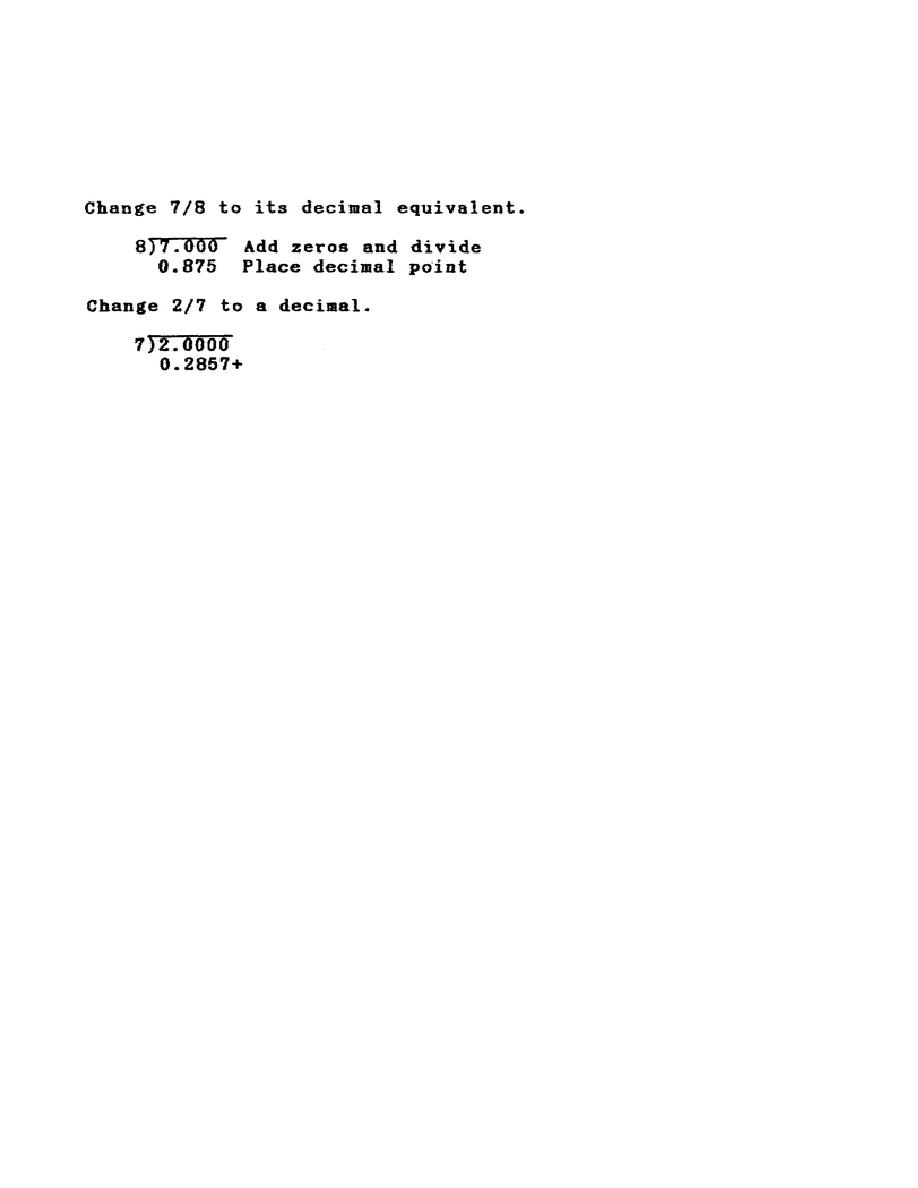
MACHINE SHOP CALCULATION - OD1640 - LESSON 1/TASK 2
EXAMPLES
NOTE
In the second example, notice the (+) placed at the
end of the decimal fraction.
This means that the
decimal fraction may be carried further if needed. A
common fraction in its lowest terms can reduce to an
exact decimal only when its denominator contains no
prime factors other than 2 and 5. Thus, 3/64 reduces
to an exact decimal, for 64 is made up of 2 x 2 x 2 x
2 x 2 x 2. On the other hand, 7/12 cannot be reduced
to an exact decimal because its denominator contains a
factor 3.
Table 1, on the following page, shows the decimal equivalents of the more
common fractions.
6.
Reduction of a Decimal Fraction to a Common Fraction
Rule 1. To form the denominator, replace the decimal point by a 1 followed
by as many zeros as there are decimal places in the original fraction.
Write in the figures to the right of the decimal point to form the
numerator.
EXAMPLE
Change .5 to a common fraction. First change the decimal point to 10, which
becomes the denominator; then write in the numerator, 5/10. Similarly, 2.75
becomes 2 75/100, which will reduce down to 2 3/4.
25




 Previous Page
Previous Page
